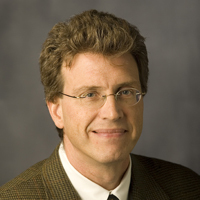 Data from the third wave of the National Congregations Study just became available last week. While the first academic paper using the data won’t be published till December, a number of blog posts have appeared in recent days focusing on specific shifts that have occurred between wave one (1996) and wave three (2012).
Data from the third wave of the National Congregations Study just became available last week. While the first academic paper using the data won’t be published till December, a number of blog posts have appeared in recent days focusing on specific shifts that have occurred between wave one (1996) and wave three (2012).
Highlights of the latest wave include:
- Decline in the number of average regular participants from 80 in 1996 to 70 in 2012,
- Increased acceptance of gays and lesbians into membership from 37% in 2006 to 48% in 2012 and also in leadership from 18% in 2006 to 26% in 2012, and
- Shift toward informal styles of worship.
Informal Worship
The move toward informal worship is evidenced by many changes, including (p.6-7):
|
1998 |
2006-7 |
2012 |
|
| Singing by choir |
72.3% |
59.0% |
57.2% |
| Leader wearing robe or special garments |
— |
52.2% |
46.3% |
| Adults jump, shout, or dance spontaneously |
13.1% |
17.3% |
22.1% |
| Raise hands in praise |
48.1% |
55.2% |
59.0% |
| Written order of service |
84.2% |
75.4% |
69.1% |
| Visual projection equipment |
14.8% |
32.4% |
45.0% |
| Organ used |
70.1% |
— |
56.0% |
| Drums used |
25.1% |
36.4% |
45.5% |
| Guitar used |
— |
43.7% |
49.2% |
So What?
Worship is evolving more rapidly than many assume. Worshipers have moved from environments driven by paper programs (down 15%) to those dominated by projection screens (up 30%).
In less than 15 years
- 15% fewer services include a choir singing,
- 14% fewer services include organ music,
- 11% more services include worshipers who raise their hands in praise, and
- 20% more services include drums.
Based on my own experiences, I think it is likely that the shift toward informality in worship is likely to accelerate over the next 15 years. Let me know if you also think that this is the most likely outcome or if you think another is more likely and why.
If you are familiar with the history of your own community of faith, how would you describe the current level of formality in worship and how would you compare and contrast such to what was normative fifteen years ago?
Note: Mark Chaves is the principal researcher for the National Congregations Study. Relying on data from the first two waves of the study, his 2011 book, American Religion: Contemporary Trends, was one I reviewed then named one of the top two books of 2011.